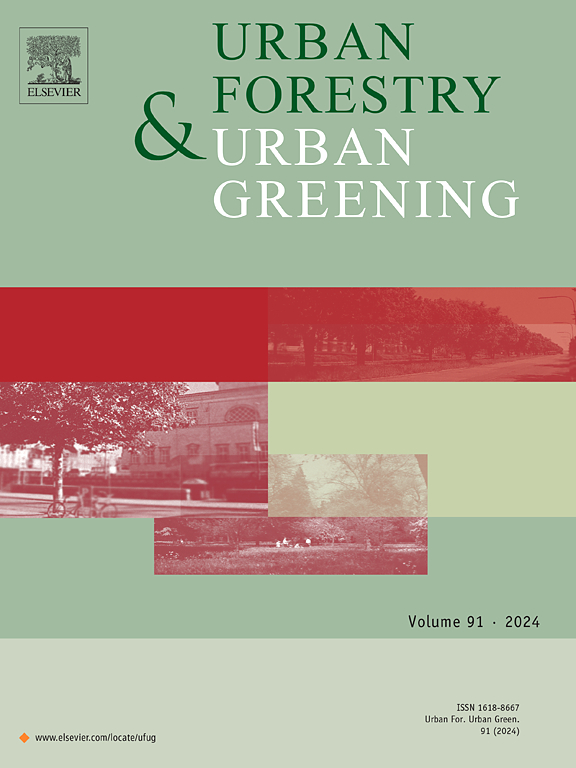城市树木的生命周期成本分析:以德国五个城市为例
IF 6
2区 环境科学与生态学
Q1 ENVIRONMENTAL STUDIES
引用次数: 0
摘要
城市中的树木是一种基于自然的解决方案,可以缓解当地的热压力,因为树木有遮阳、促进蒸发和增加生物多样性的能力。在支持建筑环境的福祉方面,欧洲绿色协议的目标强调种植新树;它没有解决现有树木的保护问题,也没有解决为应对气候变化而新种植的树木的质量问题。此外,与新种植相比,城市树木保护的经济效益受到的关注较少。因此,在几个规划竞赛中,我们为六个城市树木方案制定了成本基准,重点关注现实的规划方案。我们比较了生命周期成本,根据德国建筑成本指数和贴现率的变化分析了建造、维护和生命周期结束成本。我们的50年生命周期成本评估显示,保存现有树木,包括实施树木保护措施,比在生命周期内移除树木和重新种植树木更具成本效益。此外,如果需要种植新的树木,在绿色空间种植的成本效益是在部分封闭区域种植的两倍以上。在部分封闭的地区种植树木的成本是保护现有树木的五倍。当必须在封闭场地种植时,不考虑贴现率,优化树坑的投资回收期约为34年。如果算上贴现率,1.5%的较低贴现率会鼓励在优化的树坑中种植。我们的基准为决策者优化城市树木管理策略提供了有价值的见解。这项研究鼓励保护城市树木和非封闭地点,以最大限度地提高长期成本效益。本文章由计算机程序翻译,如有差异,请以英文原文为准。
Life cycle cost analysis of urban trees: a case study of five cities in Germany
Trees in urban sites are a nature-based solution for mitigating local heat stress due to the tree's ability to provide shading, enhance evaporation, and increase biodiversity. In supporting well-being in the built environment, the goal of the European Green Deal emphasizes planting new trees; it does not address the protection of existing trees nor the quality of new plantings in response to climate change. Additionally, the economic benefits of urban tree protection have received less attention in research than new plantings. Hence, in several planning competitions, we developed cost benchmarks for six urban tree scenarios, focusing on realistic planning scenarios. We compared the life cycle costs, analyzing construction, maintenance, and end-of-life costs based on the German building cost index and variations in discount rates. Our 50-year life cycle cost assessment shows that preserving existing trees, including implementing tree protection measures, is more cost-effective than tree removal and replacement planting during the cycle. Furthermore, if new tree planting is required, planting in a green space is more than twice as cost-effective as planting in partially sealed areas. Planting in partially sealed areas is up to five times more expensive than preserving existing trees. When planting in sealed sites is unavoidable, the payback period of an optimized tree pit is after approximately 34 years, considering no discount rate. If a discount rate is included, a lower rate of 1.5 % encourages planting in an optimized tree pit. Our benchmarks provide valuable insights for decision-makers to optimize tree management strategies for urban areas. This study encourages preserving urban trees and non-sealed locations to maximize long-term cost efficiency.
求助全文
通过发布文献求助,成功后即可免费获取论文全文。
去求助
来源期刊

Urban Forestry & Urban Greening
FORESTRY-
CiteScore
11.70
自引率
12.50%
发文量
289
审稿时长
70 days
期刊介绍:
Urban Forestry and Urban Greening is a refereed, international journal aimed at presenting high-quality research with urban and peri-urban woody and non-woody vegetation and its use, planning, design, establishment and management as its main topics. Urban Forestry and Urban Greening concentrates on all tree-dominated (as joint together in the urban forest) as well as other green resources in and around urban areas, such as woodlands, public and private urban parks and gardens, urban nature areas, street tree and square plantations, botanical gardens and cemeteries.
The journal welcomes basic and applied research papers, as well as review papers and short communications. Contributions should focus on one or more of the following aspects:
-Form and functions of urban forests and other vegetation, including aspects of urban ecology.
-Policy-making, planning and design related to urban forests and other vegetation.
-Selection and establishment of tree resources and other vegetation for urban environments.
-Management of urban forests and other vegetation.
Original contributions of a high academic standard are invited from a wide range of disciplines and fields, including forestry, biology, horticulture, arboriculture, landscape ecology, pathology, soil science, hydrology, landscape architecture, landscape planning, urban planning and design, economics, sociology, environmental psychology, public health, and education.
 求助内容:
求助内容: 应助结果提醒方式:
应助结果提醒方式:


